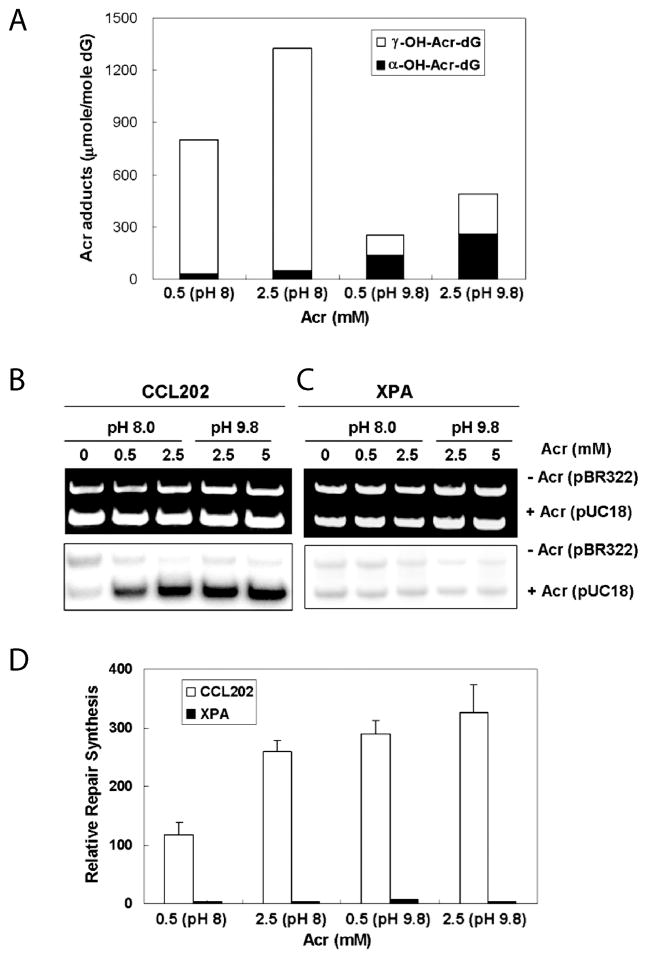Figure 6.
α- and γ-OH-Acr-dG induced DNA repair synthesis carried out by cell lysates isolated from normal human lung fibroblasts (CCL202) and xeroderma pigmentosum group A (XPA) cells. Supercoiled plasmid DNA pUC18 was modified with Acr under pH 8 and pH 9.8 conditions which produce different ratios of α-OH-Acr-dG : γ-OH-Acr-dG adducts (3 : 97 for pH 8 and 50 : 50 for pH 9.8). These Acr-modified pUC18 and pBR322 were used as substrates for in vitro repair synthesis in the presence of 32P-dATP, the same manner as previously described [9]. (A) Acr-dG adduct analysis and (B–D) in vitro repair synthesis carried out by cell lysates of CCL202 and XPA cells. Note: DNA modified with Acr under pH 9.8 conditions produces lower total Acr-dG adducts but higher α-OH-Acr-dG/γ-OH-Acr-dG ratios than DNA modified with Acr under pH 8.0 conditions, and DNA modified with Acr under pH 9.8 conditions induces more repair synthesis than DNA modified with Acr under pH 8.0 conditions. These results indicate that α-OH-Acr-dG adducts are better substrates for repair synthesis.

